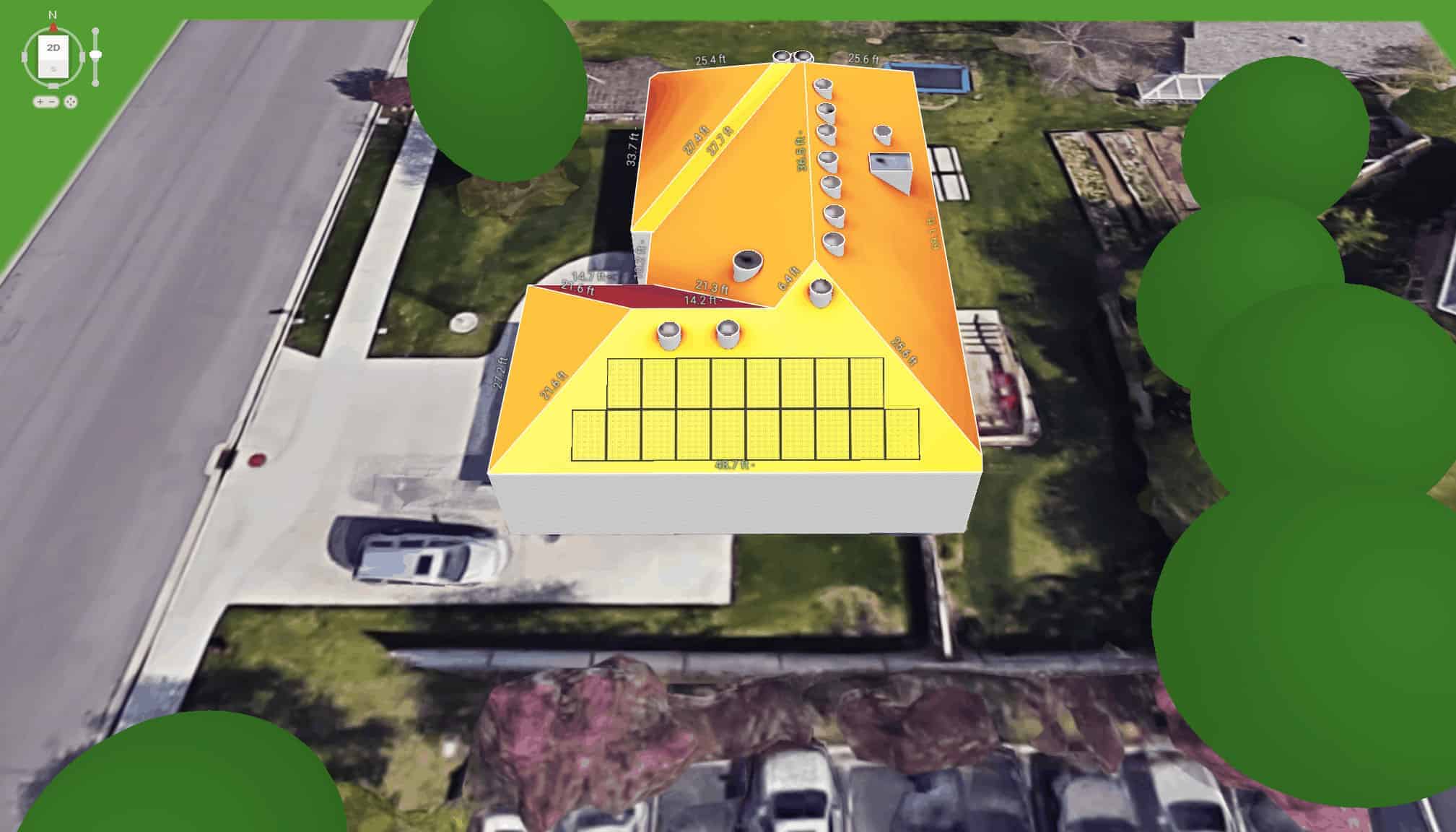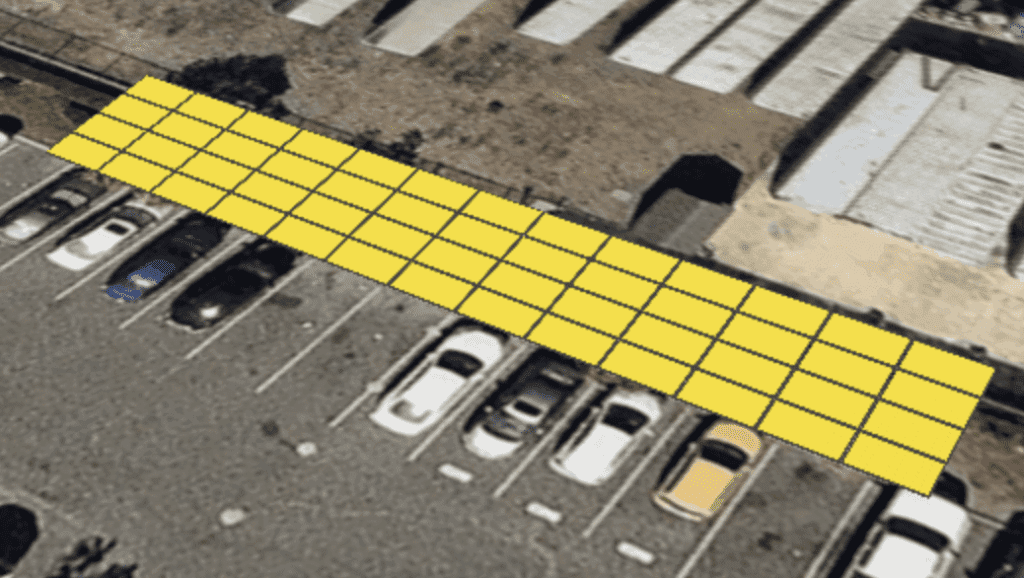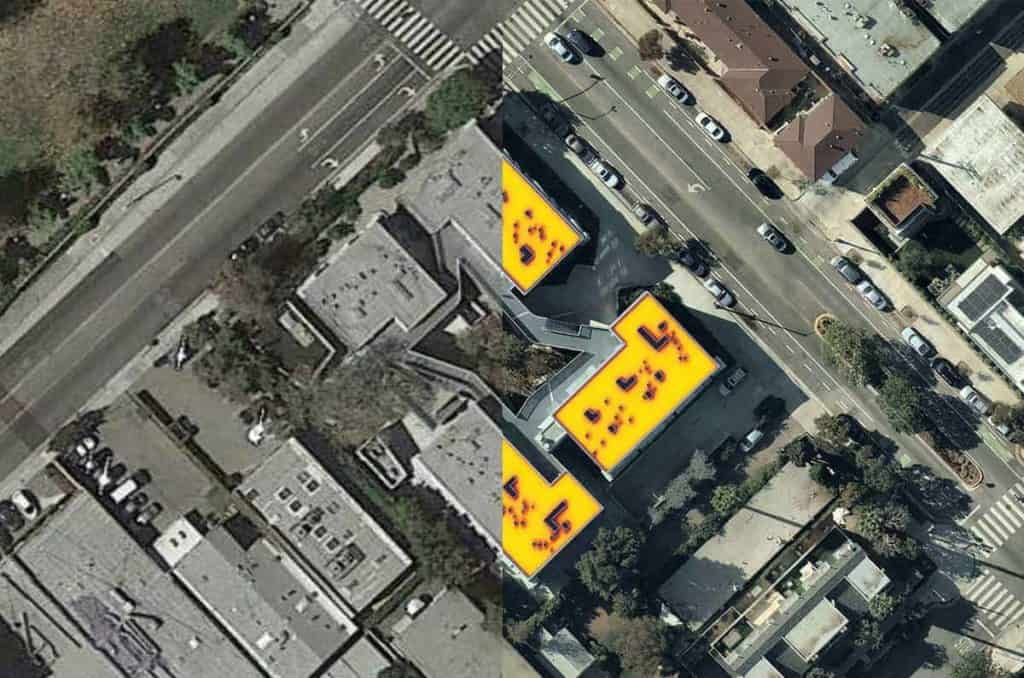As every solar designer knows, understanding the solar irradiance (available solar energy) at a project site is crucial to designing a high-performing solar installation. That’s one reason that solar software which visually indicates irradiance at different points on the roof can streamline the process of creating an ideal solar design.
But what if—as in the case of ground mounts or carports—there is no roof? Or what if you want to quickly see how changing the tilt or orientation of your panels affects the irradiance they receive? In cases like these, being able to visualize the irradiance on each panel, not just the roof surface, can help designers quickly evaluate design changes and make informed decisions.
While Aurora’s irradiance engine has always calculated the solar irradiance on modules to ensure accurate production estimates, a new update makes it possible to see the irradiance on each panel for streamlined solar design. In today’s blog post, we explore a few of the ways this makes designing easier.
 Aurora Solar software shows solar irradiance values at each point on a roof surface with a beautiful solar heat map (where lighter colors indicate higher levels of irradiance). A new update now makes it possible to see those values on the panels themselves, as shown above, for an improved solar design process.
Aurora Solar software shows solar irradiance values at each point on a roof surface with a beautiful solar heat map (where lighter colors indicate higher levels of irradiance). A new update now makes it possible to see those values on the panels themselves, as shown above, for an improved solar design process.Solar Carports and Ground Mounts
Being able to see irradiance on the surface of the panels themselves is particularly valuable when designing carports and ground mounts. Since there is no roof below these structures, being able to see the irradiance on the panels allows you to visually identify the optimal location.
With this new update, the designer can immediately see if shade will fall on the panels and, if so, explore other places to locate the array to maximize energy production—rather than having to run a performance simulation to determine expected energy production and then iterate.

Having solar irradiance and shading values on carport and ground mount panels also offers benefits when generating a shade report to submit to various agencies for approval of rebates and other incentives. Historically, contractors using hand-held devices to measure irradiance would have to attempt to estimate the angle and height at which to hold the device for an accurate shade measurement, given that there was no existing physical structure. Aurora’s new “irradiance on modules” feature saves contractors time by eliminating the need for this process.
When Panels Are Not Flush with the Roof
Another case in which it is particularly helpful to be able to see solar irradiance on the surface of your solar panels is in rooftop systems where the panels are not flush with the surface of the roof. This is because the tilt and orientation of a panel impact how much irradiance it will receive. Seeing the irradiance on modules allows you to visualize the actual irradiance the panels will receive given different tilts and orientations.
This visualization is also helpful in cases where rows of solar panels may shade each other (inter-row shading). The “heat map” on the modules indicates the extent of inter-row shading on the edges of the panels, so contractors have a visual cue to help determine whether they may want to adjust row spacing.

Excellence in solar design is a must for solar contractors to deliver high-performing systems that leave clients satisfied and ready to refer others. Yet if your operation is to be scalable, you need to be able to create optimal designs quickly and efficiently. Aurora’s new irradiance on modules feature is one more tool at your disposal to streamline the solar design process—saving time and money while ensuring precision and accuracy for your clients.